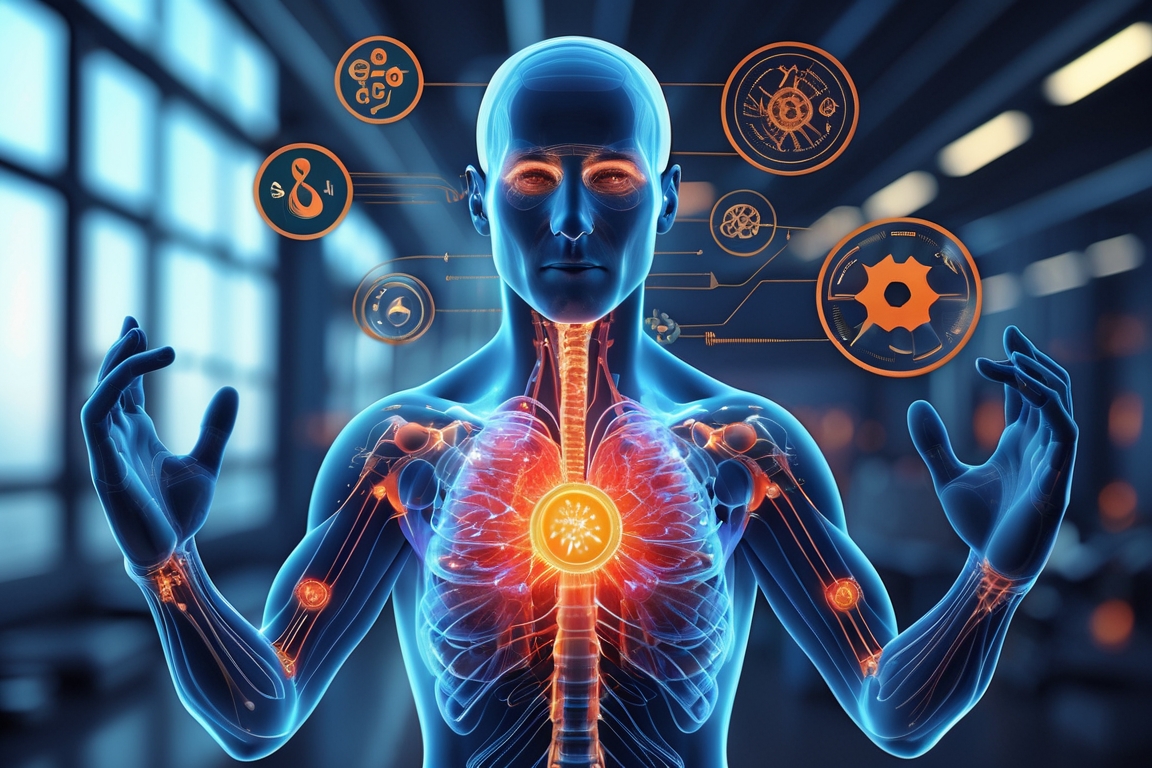Imagine waking up feeling laser-focused, energized, and physically primed to take on your day. That’s the promise of biohacking—the growing movement that blends biology, technology, and self-experimentation to optimize human performance.
Once considered a fringe idea embraced by Silicon Valley elites and wellness obsessives, biohacking has now gone mainstream. With the rise of wearable devices, functional supplements, and evidence-based health tools, anyone can begin “tuning” their body like a high-performance machine.
In this article, we’ll explore some of the most popular and cutting-edge biohacking methods, from sleep tech and nootropics to cold exposure and light therapy—and how you can integrate them safely and effectively into your lifestyle.
What Is Biohacking?
At its core, biohacking is about taking control of your biology. It involves experimenting with science-backed techniques to improve everything from focus and mood to sleep quality and muscle recovery. Some biohackers go all-in with implanted devices and genetic testing, but for most people, biohacking is simply about making smart, small changes to upgrade your health.
1. Sleep Tech: Hacking Your Rest for Recovery
Sleep is the foundation of optimal health, and biohackers know that high-quality sleep equals high performance. Thankfully, technology has made it easier than ever to understand and improve your rest.
- Wearable sleep trackers like Oura Ring, Whoop, or Fitbit give you real-time data on your sleep cycles, heart rate variability (HRV), and recovery levels.
- White noise machines, blue light–blocking glasses, and smart light bulbs that mimic natural sunrise/sunset patterns can help regulate circadian rhythm.
- Temperature-regulating mattresses or sleep systems like Eight Sleep optimize your body temperature for deeper sleep.
Tip: Try to keep consistent sleep and wake times—even on weekends—and avoid screens an hour before bed to encourage melatonin production.
2. Nootropics: Boosting Brain Power
Nootropics are substances that enhance cognitive function, memory, creativity, or motivation. They range from everyday compounds like caffeine and L-theanine (found in green tea) to more complex stacks that include adaptogens and amino acids.
Popular natural nootropics include:
- Rhodiola Rosea – reduces fatigue and boosts endurance.
- Lion’s Mane Mushroom – supports nerve growth and cognitive longevity.
- Bacopa Monnieri – improves memory and reduces anxiety.
Use caution with synthetic nootropics or prescription-grade options—these should be taken under medical supervision. Start with natural supplements and monitor how your body responds.
3. Intermittent Cold Exposure: Train Your Resilience
Cold showers, ice baths, and cryotherapy might sound extreme—but the science behind them is solid. Cold exposure has been shown to:
- Improve circulation and reduce inflammation
- Boost dopamine (a feel-good neurotransmitter)
- Increase brown fat activation, which burns calories to generate heat
Try this: End your regular shower with 30 seconds of cold water, then gradually increase the duration over time. Or test out a cold plunge or cryo-chamber session for a more intense reset.
4. Light Therapy: Aligning with Nature’s Clock
Light is one of the most powerful environmental cues affecting our biology. Artificial light—especially blue light from screens—can disrupt our natural rhythms, causing fatigue and poor sleep. On the flip side, light therapy can be used to your advantage.
- Red light therapy devices can support skin health, muscle recovery, and mitochondrial function.
- Bright light boxes used in the morning help reset your circadian rhythm and combat seasonal depression.
- Sunlight exposure first thing in the morning (10–20 minutes) helps regulate your sleep-wake cycle.
Tip: Dimming lights at night and using blue-light filters on your phone can ease your body into sleep mode.
5. Fueling Smarter: Food as a Biohacking Tool
Food isn’t just fuel—it’s information. What and when you eat can dramatically affect your energy, cognition, and long-term health.
- Intermittent fasting (e.g., 16:8 method) improves insulin sensitivity, supports weight management, and may boost cellular repair.
- Focus on nutrient-dense whole foods with plenty of healthy fats, quality proteins, and fiber.
- Consider personalized nutrition: some biohackers use DNA testing or glucose monitors to fine-tune their diet to their unique biology.
Final Thoughts: Start Small and Track Everything
Biohacking doesn’t require a lab or high-tech gear. The most powerful changes often come from simple habits: better sleep, mindful eating, regular movement, and managing stress. The key is self-awareness—tracking what works for you and adjusting as needed.
Start with one area—say, improving sleep or trying cold exposure—and experiment for a week or two. Use a journal or app to record your results. Biohacking is highly individual, so what works for one person may not work for another.
In the end, biohacking is about empowerment. With the right knowledge and tools, you can become the architect of your own health and performance—and feel better than you ever thought possible.





